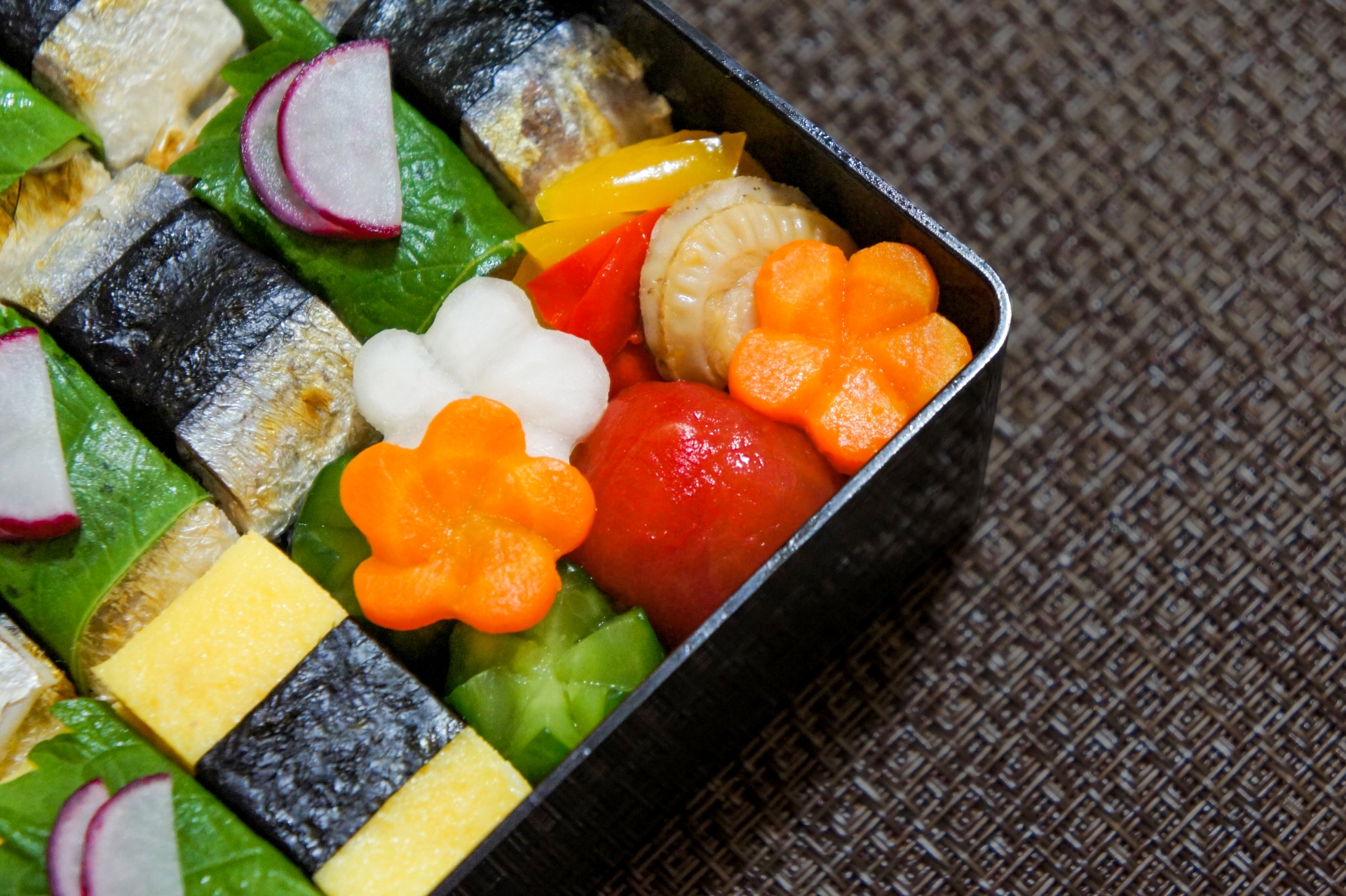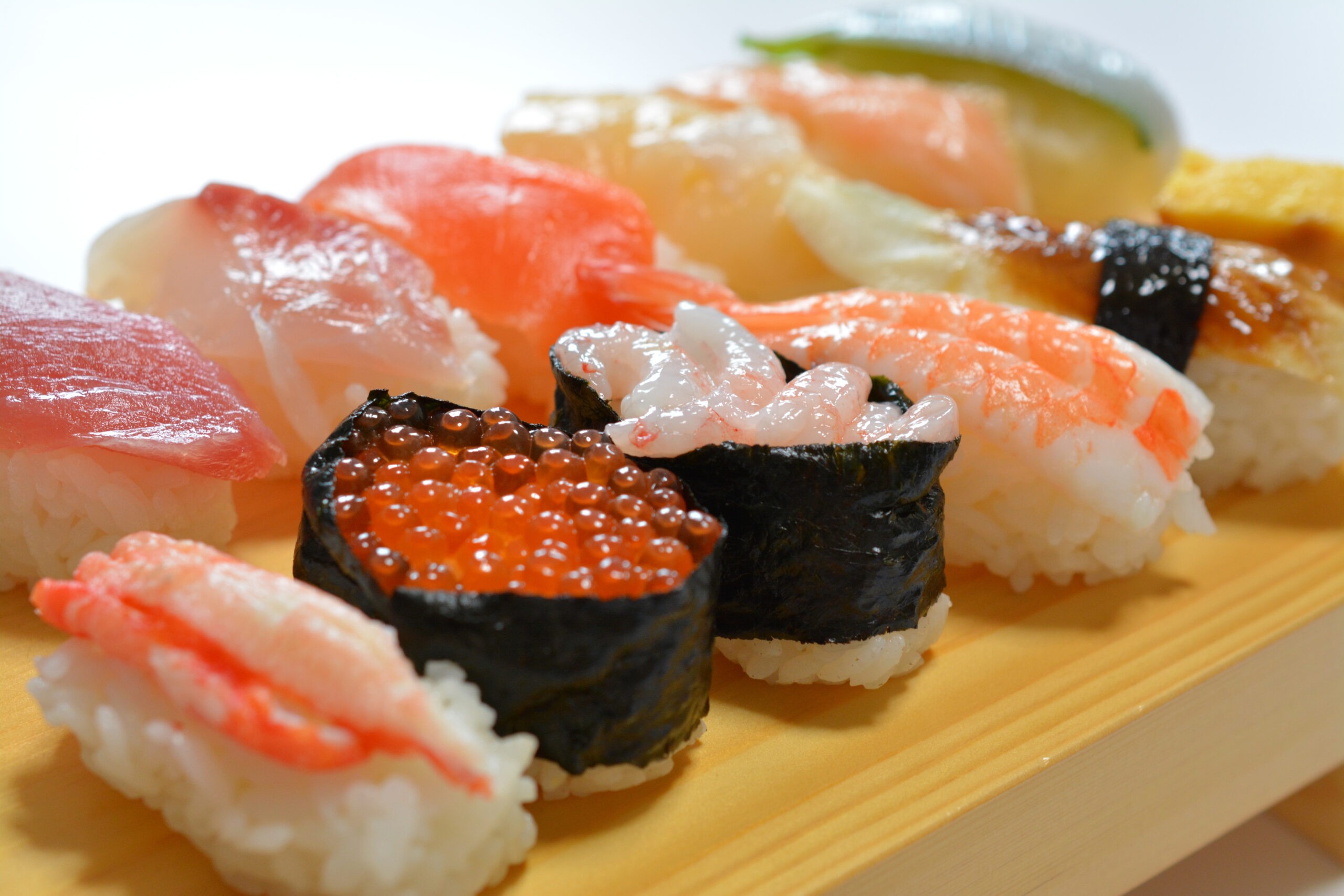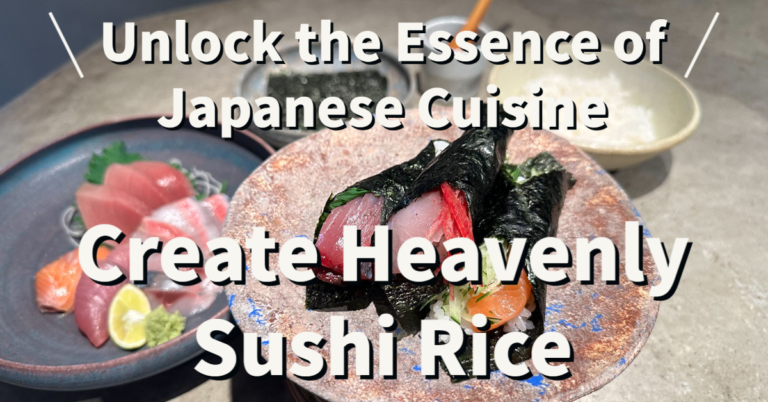Unlock the Secrets of Fluffy and Flavorful Vinegar Rice.You don’t need any special skills to make sushi rice. By simply following a few key points, you can recreate the flavors of a traditional Japanese sushi restaurant. Unlock the secrets to achieving the authentic taste by mastering the art of making sushi rice at home.
This recipe explains how to cook rice without using a rice cooker. If you have a rice cooker, you can refer to the quantities only.
Table contents
1. Choosing the Perfect Rice for Sushi Rice and How to Make It.
2. How to Make Sushi Vinegar(すし酢)
3. Techniques for Mixing Sushi Rice.
1. Choosing the Perfect Rice for Sushi Rice and How to Make It.
Perfect Rice for Sushi Rice
In Japan, there is a wide variety of rice available, and each type of rice is suitable for different dishes. It can be said that the quality of rice plays a crucial role in determining the taste of sushi. Before selecting the rice, it is important to decide whether you want to make “Fermented Sushi” (Hakko Sushi: 発酵寿司) or “Non-fermented Sushi” (Edomae sushi: 江戸前寿司).
“Fermented Sushi” includes types such as “Kakinoha Sushi” (柿の葉寿司), “Osaka Sushi” (大阪寿司), and “Saba Sushi” (鯖寿司). These sushi varieties are known for their ability to be preserved for a longer period. On the other hand, “Non-fermented Sushi” mainly refers to “Edomae Sushi” (江戸前寿司) and similar styles. These sushi are typically prepared right in front of us and should be consumed soon to avoid spoilage.
【The best choice for Fermented Sushi】
The best choice for Fermented Sushi, such as “NIHONBARE” and others, is to combine it with non-perishable ingredients like cooked fish. The rice used for Fermented Sushi is known as “KOSHITSU MAI”(硬質米), which refers to rice with a firm texture that pairs well with ingredients that have been cooked and won’t spoil easily.

【The best choice for Non-Fermented Sushi】
The best Sushi rice texture is as soon as when you eat sushi, the rice comes a part like you feel grain by grain of rice. So that, sticky texture rice is not fit for “Non-fermented Sushi”. It’s the best choice is “SASANISHIKI”, “AKITAKOCACHI”, “HITOMEBORE”, and so on. The rice for Non-fermented Sushi is “NANSHITSU MAI”(軟質米) which means soft-textured rice. It pairs well with fresh raw fish, enhancing the overall flavor and experience.

| SUSHI TYPE | RICE TYPE | Example |
|---|---|---|
| Fermented Sushi | KOSHITSU MAI (硬質米) | “NIHONBARE”(日本晴) |
| Non-fermented Sushi | NANSHITSU MAI(軟質米) | “SASANISHIKI”,“AKITAKOCACHI” “HITOMEBORE” and so on |
It may be difficult to find soft-textured rice outside of Japan. If you’re unable to find it, please use sushi rice available at your local supermarket.
Check out the video overview before diving into the recipe.
How to Make rice (For 2 servings)
Ingredients you’ll need.(Start with at least the following quantities.)
・Rice 300g(10.6oz)
・Water 300g (10.6oz)
・Dried kelp 5g (0.2oz)
~KEY POINTS~
Cook the rice slightly firm.
When the rice is cooked too soft, the texture of the sushi rice becomes mushy, and it doesn’t pair well with the sushi toppings. If you’re not using dried kelp, reduce the amount of water by 10g(0.35oz).
RECIPE
- Wash the rice.
- Put the rice, 300g of water, and dried kelp into a pot. Let it sit for 30 minutes. During this time, the rice will become fluffy.
- Place the pot on heat and bring it to a boil. Boiling is indicated by the formation of bubbles. Once it reaches a boil, cover the pot with a lid and simmer on medium heat for 2 minutes. Then, reduce the heat slightly and continue cooking for an additional 10 minutes.
- Turn off the heat and let it sit covered for 20 minutes.
2. How to Make Sushi Vinegar(すし酢)
(During the time you wait for the rice to cook)
Ingredients you’ll need:
・Rice vinegar (米酢: Komezu) 180g (6.3oz)
・Sugar 15g (0.5oz)
・Salt 25g (0.9oz)
・Dried kelp 5g (0.2oz)
*Make sure to use rice vinegar. If you use white vinegar, please increase the amount of sugar.
~KEY POINTS~
It is very important to have the temperature of sushi vinegar and the cooked rice at roughly the same level. Many famous sushi restaurants in Japan ensure that the temperature of the cooked rice matches the sushi vinegar.
By having the same temperature, the sushi vinegar can penetrate the rice grains evenly, resulting in a delicious flavor throughout the rice, even to the core.
RECIPE
- Put all the ingredients into a pot.
- Place the pot on medium heat and bring it to a boil. Alternatively, you can use a microwave (600w) for 1 minute.
3. Techniques for Mixing Sushi Rice.
Ingredients you’ll need.
・Cooked rice (You made at No.1)
・Cooked Sushi vinegar (You made at No.2)
~KEY POINTS~
While mixing the sushi vinegar and the rice, slowly lower the temperature. By doing so, the sushi vinegar can penetrate the rice more effectively, resulting in a delicious flavor. Please avoid rapidly decreasing the temperature of the rice and sushi vinegar by using a fan or a fan-like motion.
RECIPE
- Remove the burnt parts and transfer the rice to a bowl.
- Add sushi vinegar to the bowl and mix well (adjust the amount to your preference).
- Allow the rice to cool down to room temperature. During the process, gently mix the rice and vinegar by flipping the bowl upside down. *Stir the rice mixture gently during the process to prevent it from drying out.
I hope you find these tips helpful in making delicious sushi rice. Feel free to get creative with your choice of fillings and enjoy homemade sushi.
Check out these Instagram-worthy sushi gadgets and sushi accessories that enhance the deliciousness of your sushi! Take your sushi-making skills to the next level with these recommendations.

